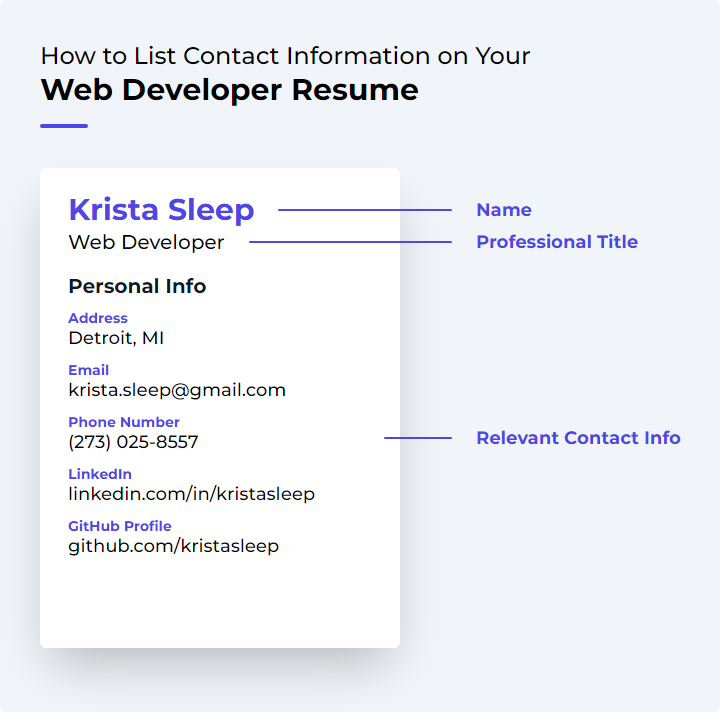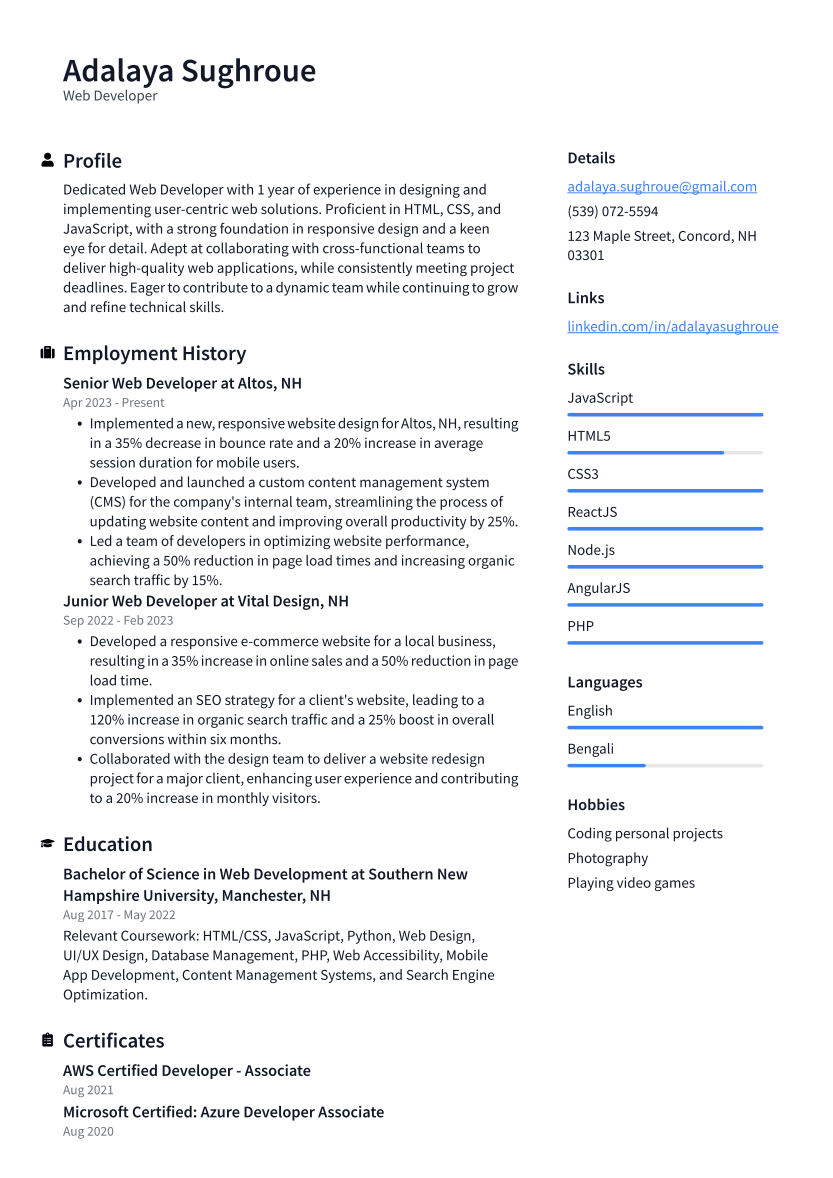Web Developer Resume Examples
Writing a great web developer resume is important because it is one of the first things a potential employer will see when they are considering you for a position. It is your opportunity to make a good first impression and sell yourself as the best candidate for the job.
Create your resume
Select from 7 professional resume templates
If you're looking for inspiration when it comes to drafting your own web developer resume, look no further than the samples below. These resumes will help you highlight your experience and qualifications in the most effective way possible, giving you the best chance of landing the web developer job you're after.
Essential Components of a Web Developer's Resume
For web developers, a resume is a critical showcase of their technical prowess, experience, and potential value to prospective employers. It serves as a pivotal first impression, influencing the likelihood of securing an interview. A well-crafted resume should highlight technical expertise, project involvement, problem-solving abilities, and proficiency in both front-end and back-end development.
Let's explore the essential sections of a web developer's resume, discuss their significance, and provide tips for making each section stand out, ultimately aiding in the creation of a compelling resume.
1. Contact Information
The contact information section is the gateway for employers to initiate further communication. Positioned prominently at the resume's top, it should include your full name, phone number, and a professional email address, ideally incorporating your first and last name.

Consider adding your LinkedIn profile URL and the URL of your personal website or online portfolio to showcase your work comprehensively. Refrain from including personal details like marital status or home address unless requested, as they are unnecessary and could compromise privacy.
The contact section is not just for providing communication channels; it's an opportunity for employers to discover more about your professional capabilities.
2. Professional Summary or Objective Statement
The Professional Summary or Objective Statement is a strategic opportunity to capture the hiring manager's attention. Positioned just below your contact information, this section should concisely convey your skills, experience, and career goals.
A Professional Summary is ideal for experienced developers, showcasing significant achievements and expertise. Conversely, an Objective Statement is suited for newcomers or career changers, focusing on career goals and potential contributions to the role.
Customize this section for each job application, incorporating keywords from the job listing and emphasizing how you can benefit the employer. Keep it brief yet impactful, aiming for 3-5 sentences.
- Professional Summary: Emphasize major accomplishments and expertise.
- Objective Statement: Outline career goals and alignment with the job role.
Note: Tailor these sections to each job application using relevant keywords from the job description.
Related: Top Web Developer Resume Objective Examples
3. Skills and Proficiencies
The "Skills and Proficiencies" section is a snapshot of your technical capabilities relevant to the job. It should encompass both hard and soft skills, such as programming languages (HTML, CSS, JavaScript, Python, PHP), database experience (MySQL, MongoDB), server-side frameworks (Node.js, Django), front-end libraries (React, AngularJS), responsive design principles, and version control systems (Git).
Soft skills are equally important, demonstrating your ability to collaborate and thrive within a team and organizational environment. Highlight problem-solving, communication, attention to detail, project management, creativity, and adaptability.
Include any relevant web development certifications, ensuring alignment with the job description to pass through applicant tracking systems (ATS) effectively.
Displaying a balanced set of hard and soft skills can significantly enhance your candidacy for web development roles.
Related: Web Developer Skills: Definition and Examples
4. Work Experience
The Work Experience section is a testament to your practical application of skills. List your relevant positions in reverse chronological order, detailing your responsibilities and achievements, particularly those that involved coding and design.
Quantify your accomplishments with metrics when possible, and mention the technologies you've worked with. For those with less experience, include internships, freelance work, or participation in hackathons and coding competitions.
Use action verbs to describe your roles, making your contributions more dynamic and engaging. This section should not only list your previous positions but also demonstrate your ability to apply your skills effectively.
5. Educational Background
The "Educational Background" section outlines your academic and training credentials. Start with the highest level of education, including degrees, institutions, and graduation dates. Certifications and specialized courses, such as those in UX Design or SEO, should also be highlighted.
Recognize that many successful web developers come from diverse educational backgrounds, including self-taught paths. Certificates from online platforms like Coursera or Codecademy are also valuable and should be included.
6. Certifications and Training
Including Certifications and Training on your resume can significantly enhance your appeal to employers by validating your skills and commitment to ongoing professional development. List certifications from respected institutions and any recent training courses, indicating a dedication to staying current with industry trends.
Detail the certification or course title, issuing body, and date obtained. If you're in the process of obtaining a certification or taking a course, it's acceptable to list them as "in progress."
Related: Web Developer Certifications
7. Portfolio of Projects/Works
A portfolio is a powerful component of a web developer's resume, providing concrete proof of your skills. Include links to live sites or code repositories, along with descriptions of your role and the technologies used. Showcasing a range of projects can demonstrate your versatility.
Focus on quality over quantity, regularly updating your portfolio with new, significant work. A current and curated portfolio signals to employers your ongoing commitment to skill enhancement and professional growth.
